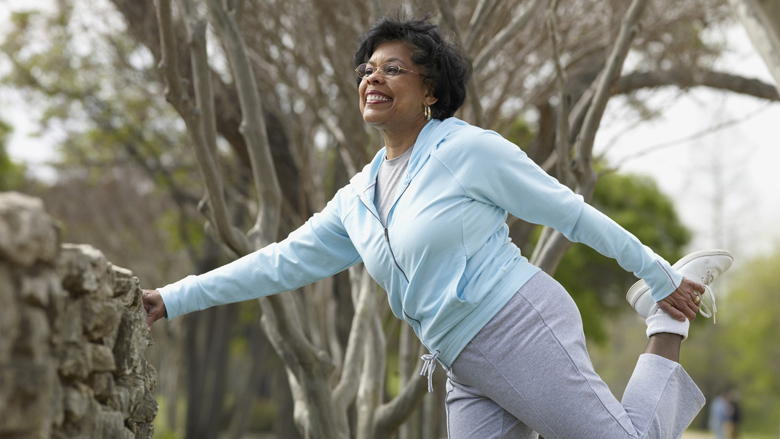
Adult Stretching In Park
As we age, our muscles become shorter and lose their elasticity. We begin to have decreased range of motion in our joints and difficulty moving. The less a person moves, the weaker they can become. For older adults, the fear of falling and injury prevents them from wanting to move at all. So the cycle continues with decreased mobility and increased weakness. Fortunately, a regular stretching program can help older adults
avoid this scenario. Stretching is one of the easiest and more gentle forms of exercise.
Stretching has several benefits including:
- Increased flexibility and range of motion – This allows better balance and reduces risk of falling or injury.
- Improved circulation – Increased blood flow to muscles and joints helps to remove toxins, maintain healthy tissues, and lubricates joints. It also helps the heart function well which can increase your energy.
- Improved posture and reduced pain – Maintaining good posture especially in the spine can reduce pain symptoms.
- Reduced stress – Stretching helps to relax tense muscles, increase blood flow to the brain and improve mental well-being.
- Better quality of life – Increased mobility and decreased pain allows older adults to stay active and enjoy a healthier lifestyle.
Tips for stretching:
- Always consult with your physician before initiating any new exercise routine.
- Warm up before stretching (eg – easy walking, pumping arms).
- Don’t hold your breath when stretching.
- Stretch slowly and don’t bounce. There should not be any pain.
- If you’ve had a hip replacement, be careful. You should not cross your legs or bend your hips past a 90-degree angle. Speak with your surgeon first.
- For more advice on stretching, contact the professionals at ProActive Physical Therapy and Sports Medicine.

